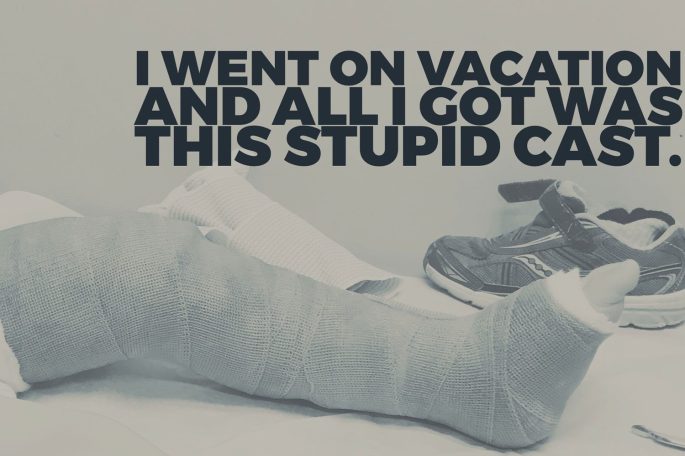 Two years ago, my youngest broke his leg at a trampoline park while we were on vacation visiting my parents. In the urgent care center across the street, the nurses informed me that such accidents were frequent, with toddlers coming in multiple times a week with broken legs. Given their popularity and the risk associated with trampolines in homes and in parks, we thought we’d review the topic.
Two years ago, my youngest broke his leg at a trampoline park while we were on vacation visiting my parents. In the urgent care center across the street, the nurses informed me that such accidents were frequent, with toddlers coming in multiple times a week with broken legs. Given their popularity and the risk associated with trampolines in homes and in parks, we thought we’d review the topic.
A recent study found that the growing number of trampoline injuries is due to an increase in injuries in trampoline parks. Trampoline injuries in people’s homes still account for the majority of injuries, but the number of home injuries has stayed level. The most common injuries are fractures and sprains. However, severe injuries such as spinal cord injuries can also happen.
If you’ve ever taken your kid to a trampoline park, you’ve probably been asked to sign documents which absolve the trampoline park of any responsibility in the case of injuries. Given the risk of injury, it’s a smart move on their part! But it also seems shady to market directly for kids, particularly younger children, when our medical institutions unequivocally advise against it.
What are the stats about kids and trampolines?
The American Academy of Pediatrics as well as the American Academy of Orthopaedic Surgeons have issued policy statements and guidelines for trampoline use. These guidelines are for trampolines in homes and parks, not for trampoline use as a sport with a proper trainer or structured training program. Highlights include:
- Three quarters of injuries occur when there are multiple children on the trampoline. Smaller children are 14x more likely to be injured than larger children jumping together.
- Falls from trampolines account for a large percentage of injuries, and these can be quite severe.
- Adult supervision is not sufficient to prevent injuries: between a third to a half of injuries occur under adult supervision (my son was injured with 3 adults present).
- Children younger than 6 account for 25-36% of injuries, and are particularly prone to bone injuries.
- Nearly half of injuries involve lower extremities, with 60% of these involving the ankle.
- 10-17% of injuries involve the neck and head. Somersaults and flips are strongly discouraged.
- Enclosures and paddings haven’t been shown to reduce injuries.
- Estimating the risk is challenging, because the use of trampolines (or exposure) is difficult to calculate.
What guidelines have medical institutions set about kids and trampolines?
- Pediatricians should counsel against recreational trampoline use.
- Families who go against this counsel should:
- Make sure they have proper homeowners insurance covering trampolines.
- Restrict the trampoline to single jumpers.
- Ensure the the trampoline is:
- Properly padded
- At ground level with no hazards around it
- Frequently inspected
- Discarded when damaged
- Ensure that somersaults and flips are not performed.
- Be familiar with these recommendations and actively supervise children.
- Remove ladders when the trampoline is not in use to prevent children from accessing the trampoline.
- Do not allow children younger than 6 years of age to use trampolines.
I have added emphasis to this final one. My son broke his leg at a specific toddler hour for kids under 4 at the local trampoline park. Nowhere was this risk posted. I signed a pretty standard waiver that did not mention this unequivocal statement regarding trampoline use in toddlers by the two most relevant groups of experts. I was unable to make an informed decision because I did not have this information. The ethics of marketing an event that runs 180 degrees counter to medical advice, without providing this info, is highly questionable.
What can you do?
In the course of writing this piece, SciMoms spoke with several pediatricians to get their input/feedback on what they’d do if their child was invited to a birthday party at a trampoline park. They all said roughly the same thing: they’d never buy a trampoline for their homes or take their child to a trampoline park for a regular play date. However, they would take their child to a trampoline park for a friend’s birthday so that their kids would not be excluded. While there, they’d carefully supervise the child and try their best to follow the recommendations from the American Academy of Pediatrics and the American Academy of Orthopaedic Surgeons.
However, our aim and hope in writing this piece is that we, as parents, become familiar with the statistics and the risk. Only then can we make informed decisions. Hopefully, as this knowledge spreads, parents will not be put in a situation where they have to decide between whether their kids can celebrate with friends and providing them with a safe environment.


You must be logged in to post a comment.